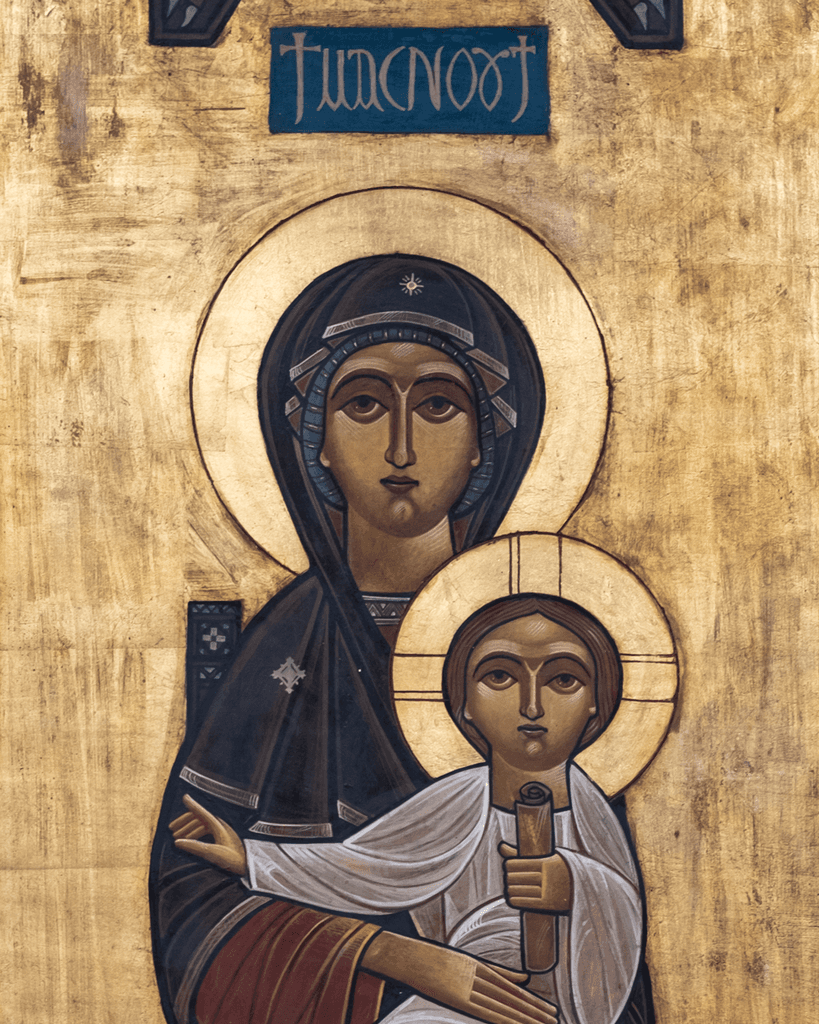St George
St. George, one of Christianity's most venerated martyrs, was a Roman soldier who, under Emperor Diocletian, courageously professed his Christian faith, enduring severe torture and ultimately being beheaded, and is honored as a symbol of steadfast faith and victory over evil.
Icon & Relic
Category
Background
St George was born around 280 AD to a Christian family that was wealthy and of noble origin, in Cappadocia, a province of the Eastern Empire, in Asia Minor.
He followed the usual career of a young nobleman and joined the Roman army, where his ability and charm brought him quick promotions. The emperor heard about him and as a result made him a tribune or an officer in the Imperial Guard.
One story says that he was a friend of Constantine, another officer, who later became the first Christian emperor. The legend says that St George came with Constantine to Britain and visited some holy places such as Glastonbury and Caerleon. On his return to Nicomedia, the capital of the Eastern Empire where emperor Diocletian settled, he met the fiercy storm of persecution.
Diocletian gave orders for the issue of a formal edict against the Christians on February 23, in the year 303 AD.
The provisions of this edict which was published on the next day in the market place, were as follows:
All churches should be levelled to the ground. All sacred books to be burned. All Christians who hold any honourable rank are not only to be degraded, but to be deprived of civil rights. Also, All Christians who are not officials are to be reduced to slavery.
In great courage, the young man George, pushed his way through the market place to read the proclamation, and then in front of the awe-stricken crown, he deliberately tore down the Imperial edict and threw it away. Consequently he was arrested and brought to the presence of Diocletian.
As the edict was proclaimed and the great church in Nicomedia was ransacked and destroyed by the pretorian guard, he liberated his slaves, distributed all his wealth to the poor and prepared himself for martyrdom. He entered Diocletian's palace and rebuked him for his behaviour against the Christians.
The Emperor tried to seduce him by promises that he would be granted a higher position in the Empire. But as these promises failed to attract him, the Emperor began to threaten him with unbearable tortures that he will inflict on him. Lastly he put him in prison.
Diocletian knew that nothing, except sin, could destroy the strength, and demolish the integrity of this Saint. Thus he arranged for a very beautiful woman to spend the night with him in prison and try to debauch him. St George who could only look forward to heavenly joy, began to pray and within a short while he managed to swing her heart to the Christian faith. Soon she seriously began to inquire about salvation, and by the morning she declared that she found her true Bridegroom Jesus Christ. With great courage she announced her Christianity to the emperor and joined the other saintly martyrs.
St George
St George
Relic of St George
His body was torn by a special instrument that had metallic teeth, and our Lord Jesus rose him after his death, and many pagans were converted. The emperor became very agitated, imagining that George was using magic. He called his top magician, Athanasius and requested him to prepare a lethal poison to kill George. The saint signed over the chalice with the sign of the cross before drinking it and no harm came to him. Another cup was also given to George, but this time with his hands tied behind his back. The saint signed it by his head saying:
Shall I drink it from here or here or here or here?!
During all these tortures, he nevertheless kept on talking to Diocletian about the powers of the Christian faith. At the end the emperor asked him if he could raise a dead man he knew of. St George prayed to our Lord and the dead man came back to life. The result of that was the conversion of both the dead man and the magician as well as many others. They all were martyred.
When all methods failed to incite George, the emperor invited him in his palace to entertain him. He offered him an appointment as a prince if he only sacrificed once to the idols. George replied:
Tomorrow you will see the powers of your gods.
At the palace, George met empress Alexandra. She spoke with him, but the conversation quickly changed its course and he began to preach to her about Jesus Christ, the Saviour of the world.
On the following day many people went to the temple to witness St George's sacrifice to the idols. The Saint stretched his hands, raised his eyes to Heaven and in a moment, the idols collapsed and fell to the ground. The crowds shouted:
We believe in George's God!
At this, the emperor and his men put an end to the lives of the new Christians, of St George, and of Empress Alexandra in 303 AD.
















